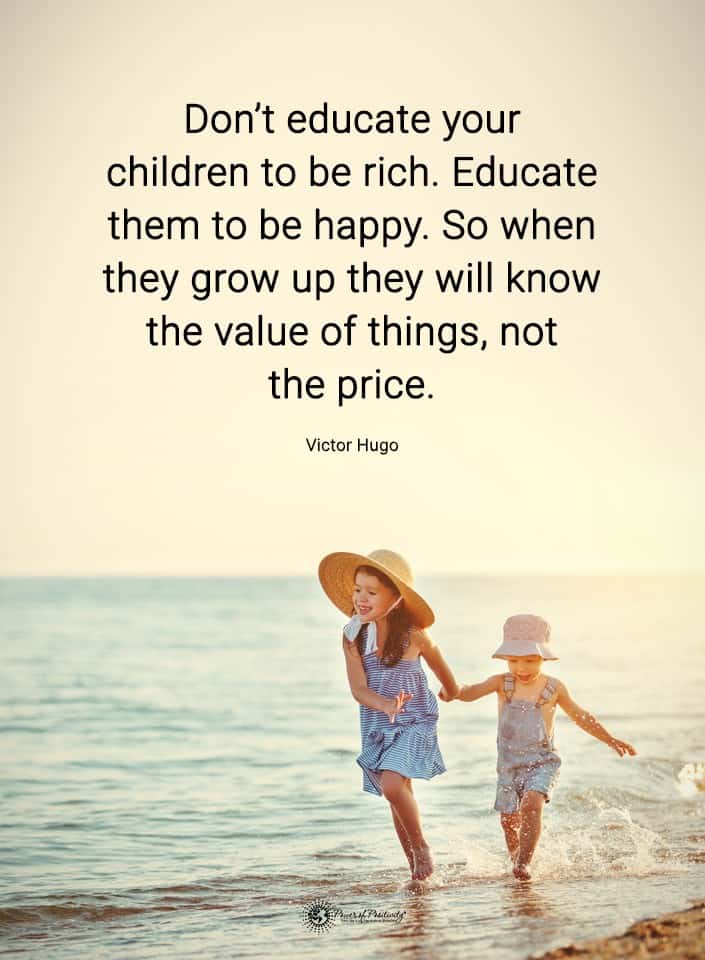No one could have imagined that the whole world would come to a halt. Children didn’t even receive a full year of education in 2020 due to school closures. Even when schools slowly opened back up – many offered virtual learning, so children still weren’t going to school.
There was a fear that not going to school was going to hurt children in the long run. They were missing that valuable face to face instruction that they get from teachers.
Their social lives were also destroyed since they couldn’t go to school and interact with others their ages. They didn’t even have social lives at home – they had to stay in the house, away from friends for a large part of the year.
School closures and lockdowns were hard on everyone, but especially hard for children. However, research is showing that you may not need to worry as much as you thought. According to a study published in August of 2020, kids deal with school closures a lot better than people thought they would.
The Study
The study was done by Peter Gray, Ph.D., a professor at Boston College and author of Free to Learn and Psychology (a textbook). It was a simple but effective study that involved having paid participants to take surveys. The participants were all from the United States.
 Parents or children could fill out the survey. However, it was either one parent or one child per family, not both. The study included 798 parent surveys and 762 child surveys for a total of 1,560 participants. The survey was open to families with students between the ages of 8 and 13.
Parents or children could fill out the survey. However, it was either one parent or one child per family, not both. The study included 798 parent surveys and 762 child surveys for a total of 1,560 participants. The survey was open to families with students between the ages of 8 and 13.
The selection pool of participants included multiple races, with the percentage of each race being similar to the U.S. population’s racial makeup. Forty percent of the parent surveys were fathers. Over 50% of the families that participated had annual incomes between $25,000 and $100,000 per year.
The results were not what people expected. Overall, it seemed that children were doing well with online schooling, and many of them even enjoyed it better than a traditional school. In fact, the survey revealed that many of the children were learning to become more independent and responsible.
Some of the statistics of the survey were:
- Around 91% of the students were completing their online assignments as they should.
- Out of the children completing the assignments, 48% were a little stressed about making mistakes or not understanding the work.
- It takes children an average of three hours to do their school work versus the six hours they spend at traditional school.
- Fifty percent of parents said their child was getting more sleep than ever before.
- On the parent’s survey, 85% indicated that their child was happier now than before. On the child’s survey, 62% indicated they were happier than before.
Parents seem to also be happier with the online elementary and online high school arrangement. A majority of parents indicated that children are learning new things on their own, doing more chores around the house, and doing more things on their own. They are also happy to see their children handling the lockdowns so well.
Dr. Grey conducted a second study of the same nature a month after the first study. The overall results showed that happiness, independence, and responsibility had improved even more for parents and children. Stress levels were less. Based on the results from the surveys, it seems that children are thriving during school closures.
Why School Closures Seem to Be a Good Thing for Some Children
While this survey was designed to reveal how children are doing with at-home learning during school closures, it also reveals something else. If children can do this well on their own, there must be a problem with the modern school system. The education system in the United States has been a hot topic of debate for decades. Many educators, parents, students, researchers, and more say that the modern school system is outdated. Here are some statistics from the U.S. Department of Education on the education system in the United States:
- The United States has one of the highest school dropout rates in the world.
- The U.S. ranks 12th in the world for college attainment.
- Among students in the U.S. that go to college, half of them need remedial courses their freshman year.
- Among college students in the U.S., half of them never graduate.
The results of these surveys, paired with these alarming statistics, show that it’s time for an education system overhaul. It’s not easy to redesign the education system from the ground up, but many schools had already implemented some ideas (before school closures happened).
Recent Changes to the U.S. Education System That Has Been Working
In 2002, the No Child Left Behind Act was implemented. The purpose of this law was to ensure that all children had equal access to a high-quality education. The goal was for all students in elementary and secondary schools to meet or exceed state standards in reading and math by 2014.
The program was a moderate success at that time. Many improvements were seen across the country, especially for schools that were desperately in need of funding and supplies. However, the program quickly became outdated, especially in STEM (Science, Technology, Engineering, and Math) areas. After a while, children started being left behind again.
Race to the Top
In 2009, the Obama Administration launched an initiative called Race to the Top. This was a $4.35 billion grant program that would give funds to schools that desperately needed it after the economic policies of the Bush administration. However, the administration didn’t just give the money away. They turned it into a contest of sorts – a challenge for schools to meet the Common Core State Standards.
These standards were optional for states to meet, and many states were not pushing to meet them. Race to the Top gave them an incentive to meet the requirements. As the Common Core Standards, Race to the Top was optional for states to participate in. But because they need the money so badly, 46 states and Washington D.C. participated in the program.
Problems with No Child Left Behind
Race to the Top didn’t replace or change the No Child Left Behind laws. It was simply a way to entice states to meet these standards. It worked for a while until it became evident that many states could not meet the standards.
The Obama administration answered this problem with an “opt-out” program, but the catch was that teachers would have to be evaluated with the students’ standardized testing programs. This angered educators and unions all across the country. It would seem that the No Child Left Behind laws weren’t working.
Every Student Succeeds Act
Despite the issues with No Child Left Behind, the 2015-2016 school year saw a high school graduation rate of 83.2%, the highest it had ever been. In the same year, the Obama administration enacted the Every Student Succeeds Act. This was a complete overhaul of the No Child Left Behind Act and was much more successful. Obama’s goal was for the United States to be the number one country in education by 2020.
In 2016, when Donald Trump became president, his administration’s goal was to overturn the Every Student Succeeds Act. That didn’t happen, and the United States is still not number one in education in the world. The Trump administration may have been able to enact policies that could make the goal happen in time, but school closures due to the coronavirus got in the way.
Ideas for Future Changes in Education
Education, as the world knew it a year ago, is drastically different now. However, with this change has come positive results that no one really expected. Things are not perfect, but educators could take a few pointers from the current situation to improve the country’s education system in the future. Some suggestions are:
- Shorter school hours.
- More independent assignments.
- Change the school week from five days of in-person instruction to three days of in-person instruction.
- More emphasis on technology.
- Smaller class sizes.
- More parent involvement.
It will take a lot of analysis and time to get the education system back on track in the United States. Hopefully, administrators and the education department consider these ideas since they seem to be working well during the lockdown.
 Final Thoughts on the Studies and School Closures
Final Thoughts on the Studies and School Closures
These times are unprecedented, and not just where education is concerned. However, the studies show educators, administrators, politicians, parents, and most of all. Students have adjusted with flying colors. It’s much better than anyone could have hoped for.
As we advance, everyone must keep in mind how well students are doing now. This crisis revealed a peek into the dilemma of improving the United States’ education system. Hopefully, the powers that be are listening.


















